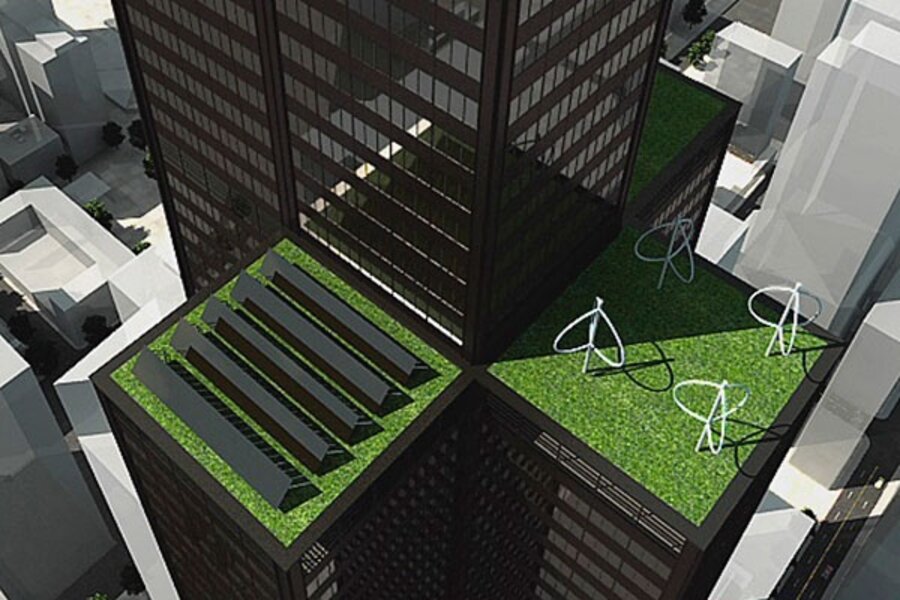Greening the Sears Tower
Loading...
Chicago's Sears Tower – which, from 1974 to 1998, stood as the world's tallest building – is getting a green makeover.
Wind turbines, a solar water heater, and the world's highest green roof are just a few of the proposed improvements that the building's owners and architects announced Wednesday for the 110-story, 1,450-foot skyscraper .
The $350 million, five-year project also includes plans to modernize the tower's 104 elevators, improve the insulation of the exterior walls, upgrade the plumbing, and even add more bike racks for commuters. The goal is to reduce the building's electricity consumption by 80 percent and save 24 million gallons of water each year.
The project will create 3,600 jobs, building officials said. The New York Times reports that money for the project will be raised from "private equity investment, grants, debt financing, and government funds."
Additionally, the owners also are planning to build a 50-story luxury hotel next door, which would be powered entirely by energy generated by the skyscraper, whose name is slated to be changed to the Willis Tower this summer.
To many, the concept of a "green skyscraper" may seem like an oxymoron. But it turns out that these icons of industrialization, to the extent that they increase population density, tend to be far more energy efficient than suburban office parks.
Writing this past March for The New York Times's Economix blog, Harvard urban economist Edward Glaeser remarked on a study that he coauthored of carbon emissions across different metropolitan areas in the US. He and UCLA economist Matthew Kahn found that those living in urban centers emitted less carbon than those living in the 'burbs, partly because they tend to drive less. In New York and San Francisco, driving less accounted for a two-ton difference per family (the average American emits about 20 tons of CO2 annually).
But cars represent only one-third of the gap in carbon emissions between New Yorkers and their suburbanites. The gap in electricity usage between New York City and its suburbs is also about two tons. The gap in emissions from home heating is almost three tons. All told, we estimate a seven-ton difference in carbon emissions between the residents of Manhattan’s urban aeries and the good burghers of Westchester County. Living surrounded by concrete is actually pretty green. Living surrounded by trees is not.
The policy prescription that follows from this is that environmentalists should be championing the growth of more and taller skyscrapers.





